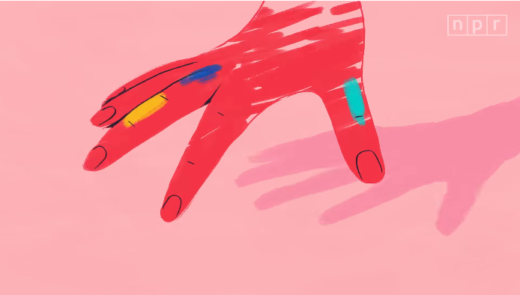Imagine, as another patient has reported, sitting down to play the piano, only to have one hand levitate far above the piano keys as you try to practice. It's not that you've changed your mind; your goal is still to play a sonata. But that hand — still yours, and now also not yours — is obeying new directions, and you didn't come up with them consciously.
For the pianist and Byrne, and many other cases, alien hand symptoms appears rooted in disruption of communication through the corpus callosum. That's the set of fibers that connects the right and left sides of the brain.
The pianist's corpus callosum showed missing connections on an MRI, and Byrne's left hand developed its disobedience after a surgeon severed her corpus callosum in an operation to treat epileptic seizures.
No matter how it arises, alien hand syndrome points out something important about our brains: The symphony of our minds depends on the interconnectedness of different regions of the brain, each playing its own role.
More unexpected stories of why and how thoughts and feelings work the way they do are on deck in the new season of Invisibilia. It returns March 9. You'll find new episodes — and all the past episodes — on the podcast's page, NPR One, or wherever you get your podcasts.
For the pianist and Byrne, and many other cases, alien hand symptoms appears rooted in disruption of communication through the corpus callosum. That's the set of fibers that connects the right and left sides of the brain.
The pianist's corpus callosum showed missing connections on an MRI, and Byrne's left hand developed its disobedience after a surgeon severed her corpus callosum in an operation to treat epileptic seizures.
No matter how it arises, alien hand syndrome points out something important about our brains: The symphony of our minds depends on the interconnectedness of different regions of the brain, each playing its own role.
More unexpected stories of why and how thoughts and feelings work the way they do are on deck in the new season of Invisibilia. It returns March 9. You'll find new episodes — and all the past episodes — on the podcast's page, NPR One, or wherever you get your podcasts.
Copyright 2018 NPR. To see more, visit http://www.npr.org/.9(MDAxOTAwOTE4MDEyMTkxMDAzNjczZDljZA004))

9(MDAxOTAwOTE4MDEyMTkxMDAzNjczZDljZA004))